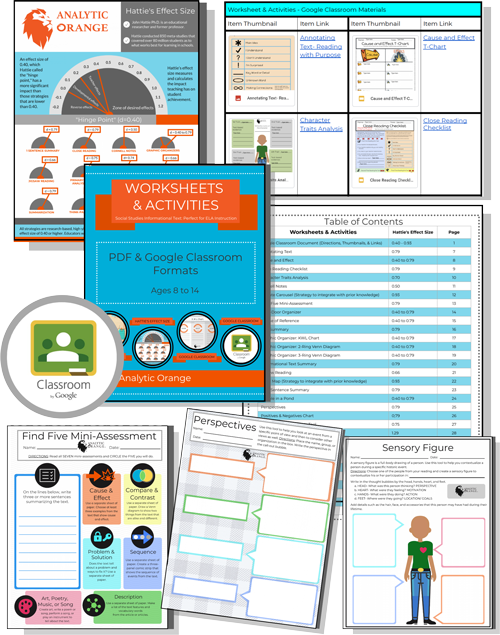“If you can see it, you can be it” is an adage educators who work with diverse populations know to be true. How important is it for students who are not white to see high-achieving people who look like them in the instructional materials presented to them in class? What might be the implications for “business as usual” textbook and instructional materials selection mean for students of color?
Oprah’s O Magazine ran a photo-essay titled “Let’s Talk About Race” by Chris Buck in May 2017. Perhaps you have seen the photos in the magazine or reported by CNN, The Huffington Post, or on Tumblr. The three photos show a white girl looking at rows of African American dolls in a store, a white woman serving a Latina woman tea, and several white women providing professional pedicures to Asian women. Did the images cause you to pause and reflect? What does this have to do with instructional materials? Actually quite a bit!
Research has demonstrated the benefits of a culturally diverse curriculum – not just the images, but points of view, too. “The Century Foundation Report” by Wells, Fox, and Cordova-Cobo (2016) stated, “Supporting the growing body of evidence on the educational benefits of diverse classrooms, researchers have found pedagogical value inherent in having multiple vantage points represented in classrooms, helping all students think critically about their own views and develop greater tolerance for different ways of understanding issues.” Dr. Ladson-Billings (1992) noted, “It (culturally relevant pedagogy as an approach) uses the students’ culture to help them create meaning and understand the world. Thus, not only academic success, but also social and cultural success is emphasized.” Diverse perspectives and images in instructional materials are extremely important for academic growth and the social emotional well-being for all students.
The majority of U.S. school teachers are white females according to Education Week’s article published June 5, 2019. Our job as professional educators is to ensure all students reach their highest potential and that includes closing the academic achievement gap for minority students. Don’t rely on your overwhelmed classroom teachers to gather additional resources to supplement the monochromatic/majority (white) instructional materials the district provides. Actively seek out educational publishing companies like Analytic Orange that put inclusivity and minority point-of-view first (not as a counterpoint). “Multicultural education can be taught to all children and is beneficial to all children” (Patrick Coggins, Ph.D., J.D., L.L.D., Jessie Ball, & Shawnrece D. Campbell, Ph.D.).
Does the curriculum your district has purchased and provided to schools reflect the students who will be reading and learning?
References
Ahuja, Masuma. “These Photos Are Meant to Turn Our Racial Assumptions on Their Head.” CNN. May 19, 2017. Accessed June 08, 2019. https://www.cnn.com/2017/05/19/us/race-photo-series-o-magazine-trnd/index.html.
Coggins, Patrick, Ph.D., J.D., L.L.D., and Shawnrece D. Campbell, PhD. “Using Cultural Competence to Close the Achievement Gap.” The Journal of Pan African Studies2, no. 4 (June 2008): 44-59. http://www.jpanafrican.org/docs/vol2no4/2.4_Using_Cultural_Competence_to_Close_the_Achievement_Ga1.pdf.
Ladson-Billings, Gloria. “Toward a Theory of Culturally Relevant Pedagogy.” American Educational Research Journal32, no. 3 (1995): 465-91. doi:10.2307/1163320.
Loewus, Liana. “The Nation’s Teaching Force Is Still Mostly White and Female.” Education Week. February 20, 2019. Accessed June 08, 2019. https://www.edweek.org/ew/articles/2017/08/15/the-nations-teaching-force-is-still-mostly.html.
Staged-Photography. “Staged-photography.” August 19, 2017. Accessed June 08, 2019. https://staged-photography.tumblr.com/post/164362420072/chris-buck-lets-talk-about-race-commissioned-for.
Stuart Wells, Amy, Lauren Fox, and Diana Cordova-Cobo. “How Racially Diverse Schools and Classrooms Can Benefit All Students.” The Century Foundation. April 03, 2017. Accessed June 08, 2019. https://tcf.org/content/report/how-racially-diverse-schools-and-classrooms-can-benefit-all-students/.
Workneh, Lilly, and Lilly Workneh. “These Profound Photos Masterfully Turn Racial Stereotypes On Their Head.” HuffPost. May 18, 2017. Accessed June 08, 2019. https://www.huffpost.com/entry/these-profound-photos-masterfully-turn-racial-stereotypes-on-their-head_n_591dceece4b03b485caf8c6d.

